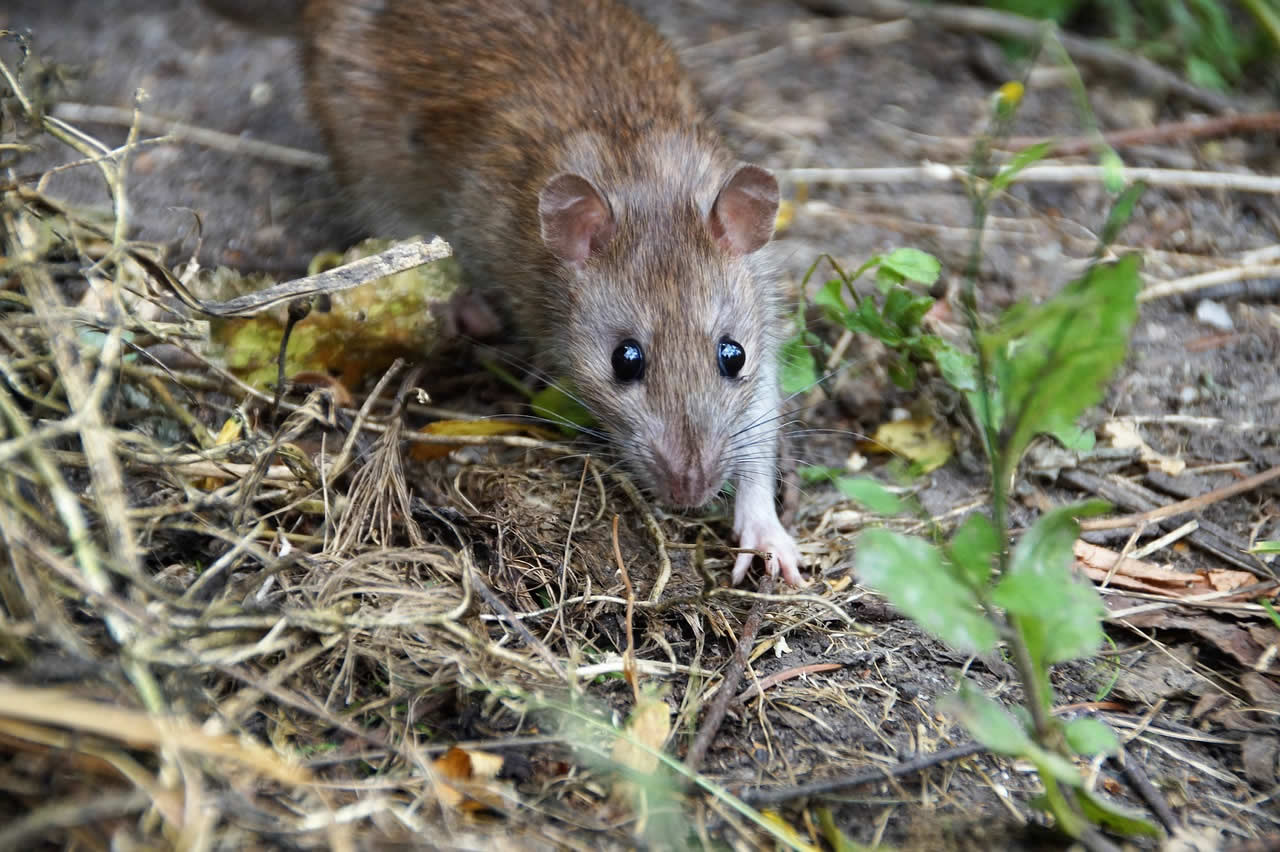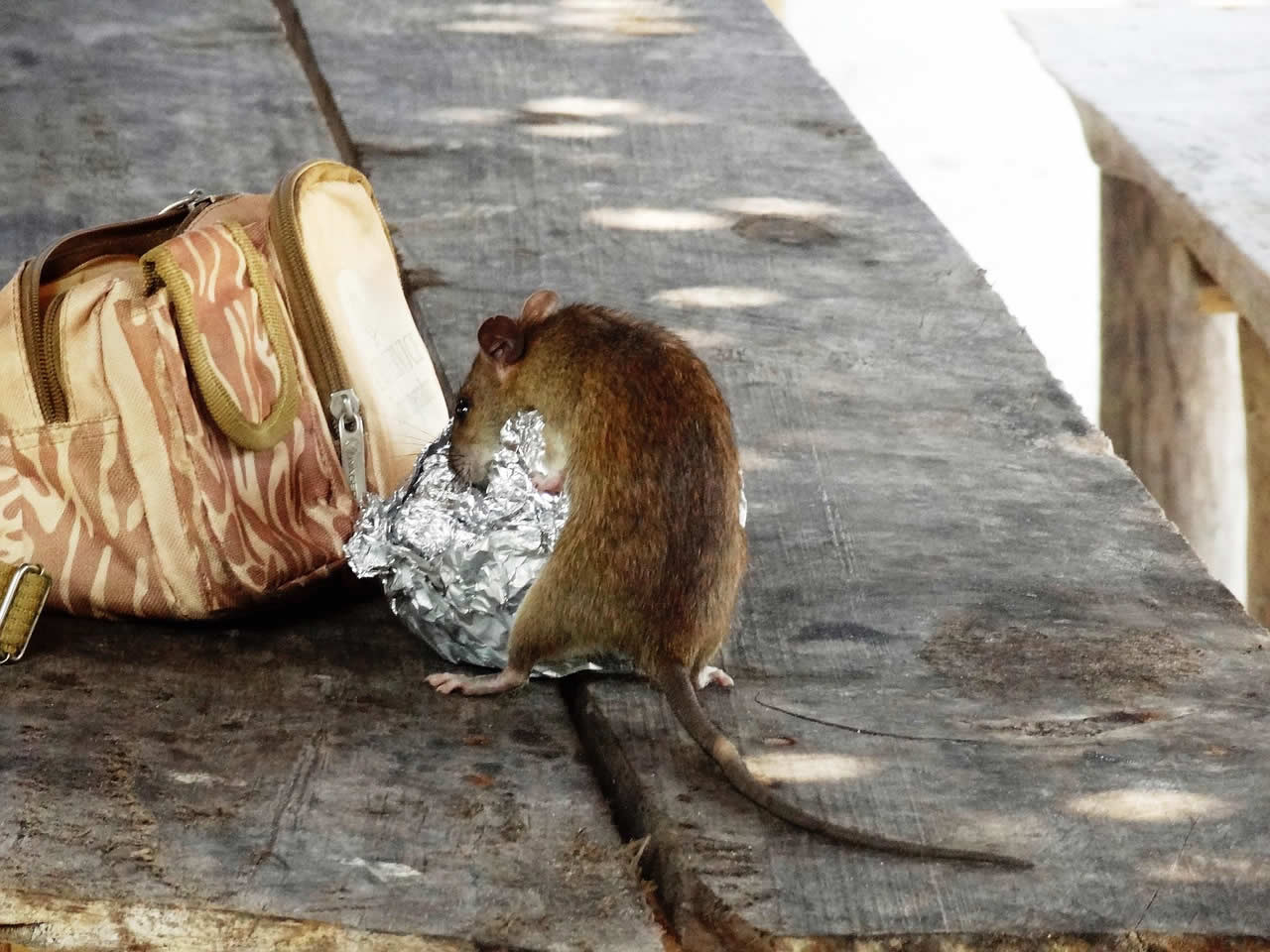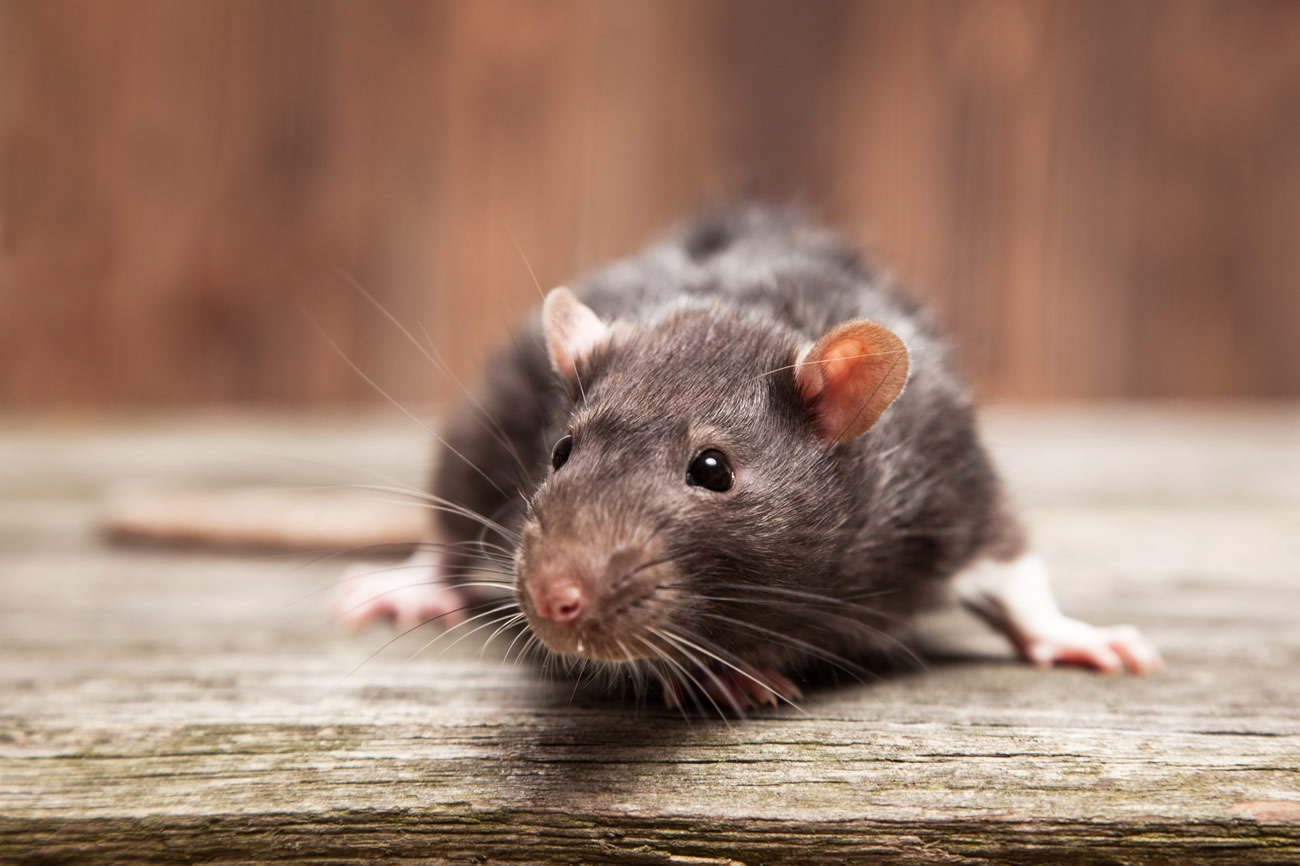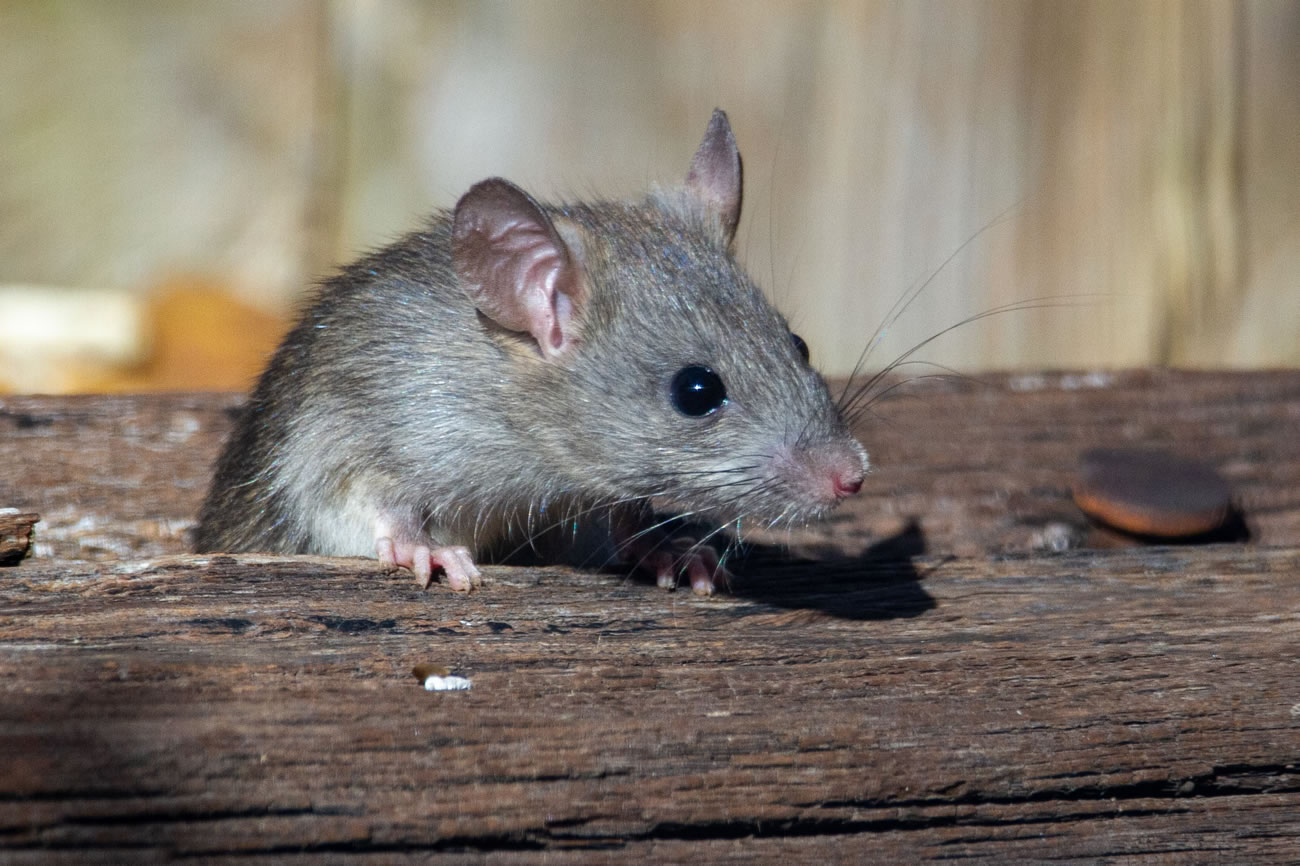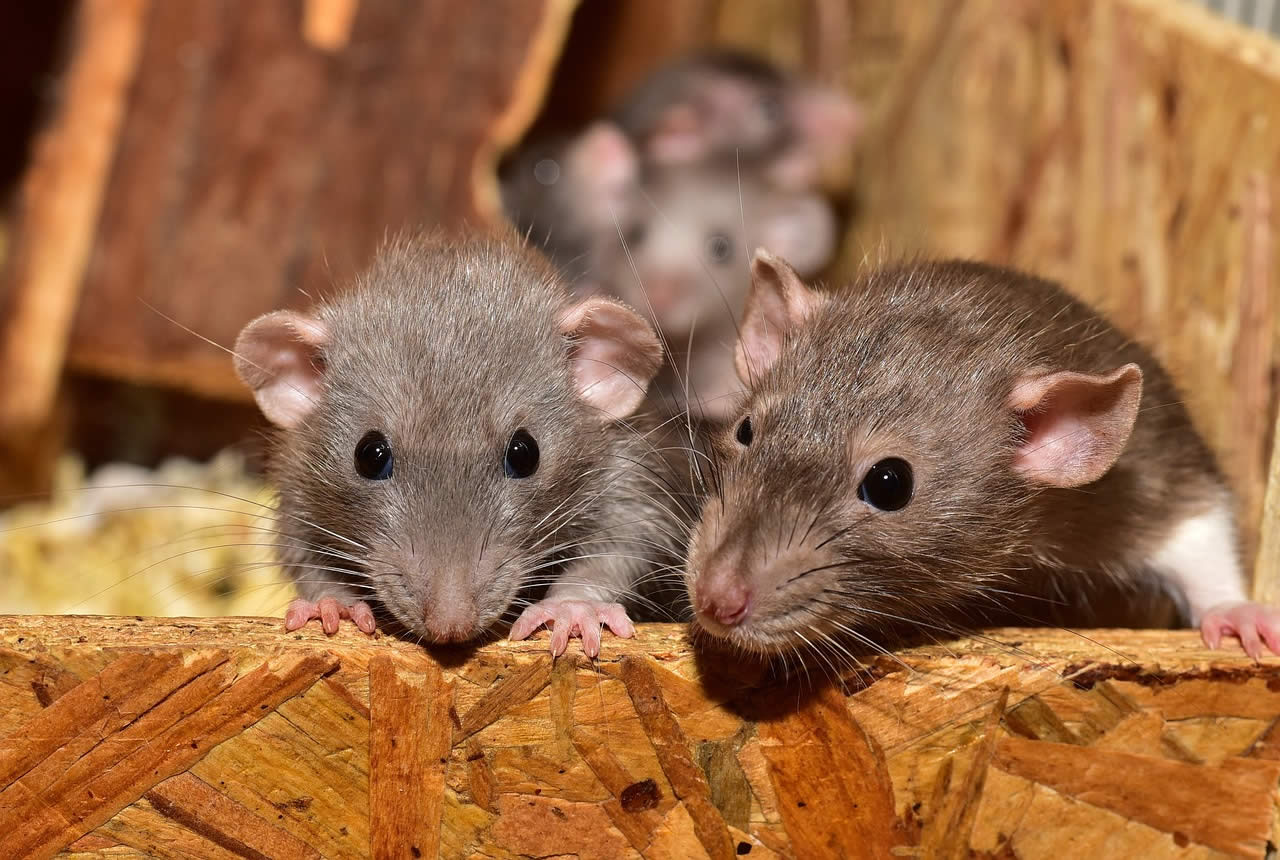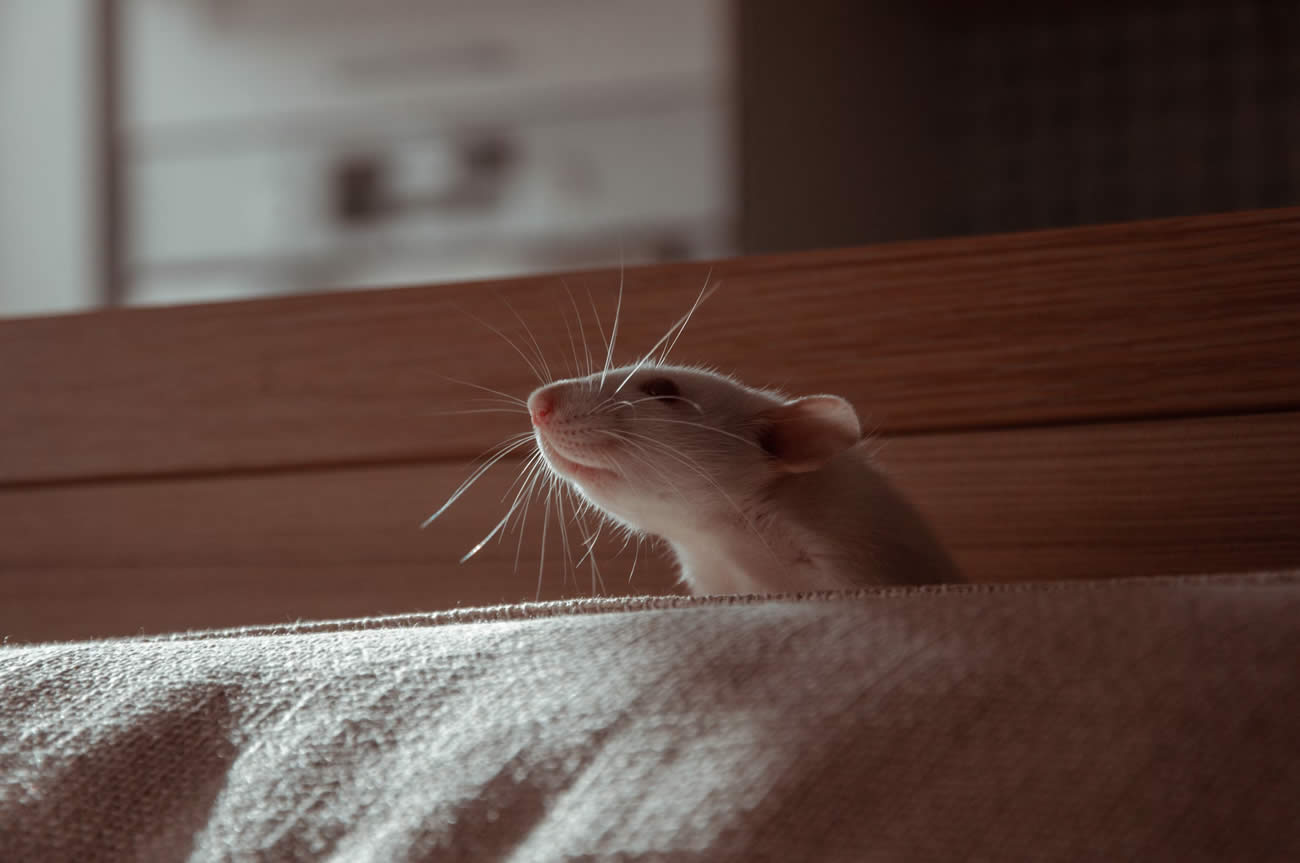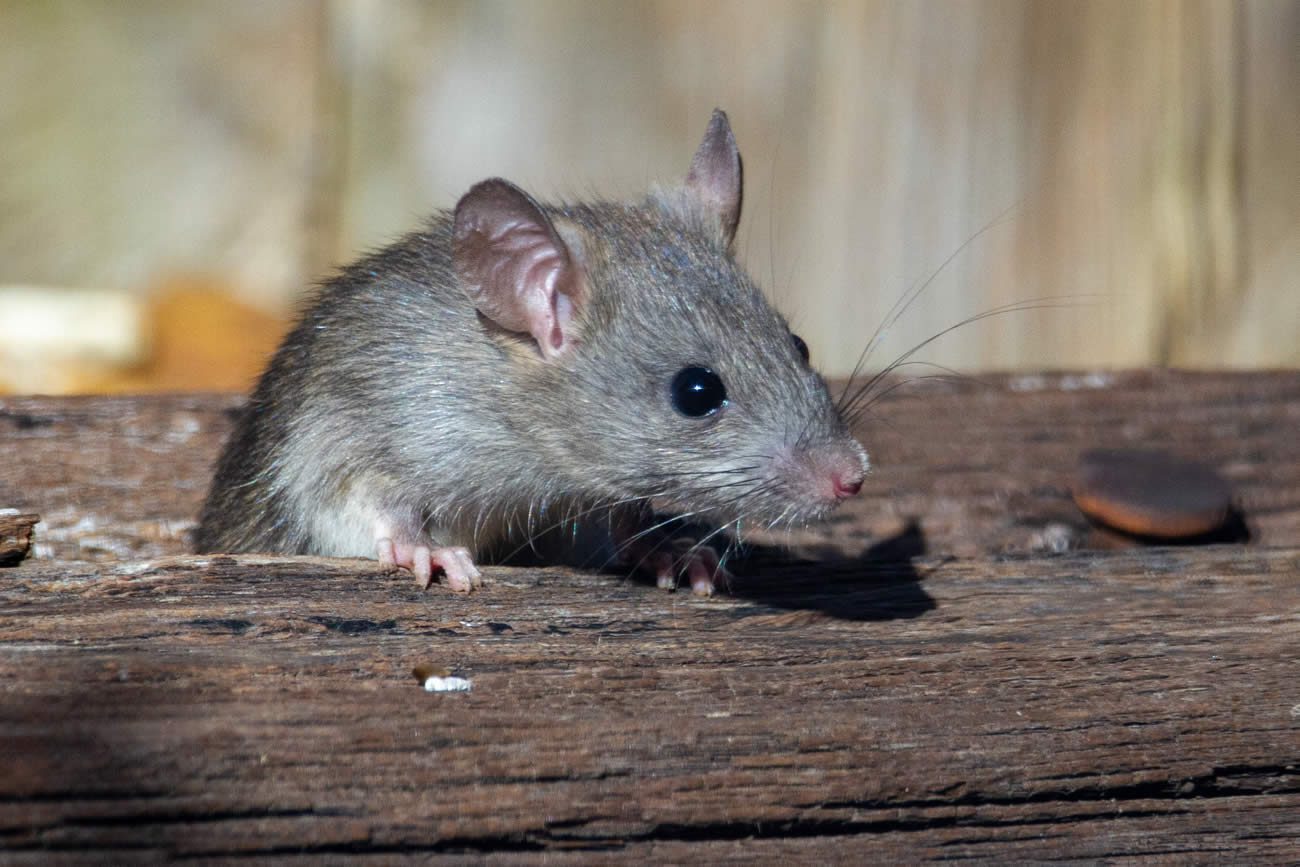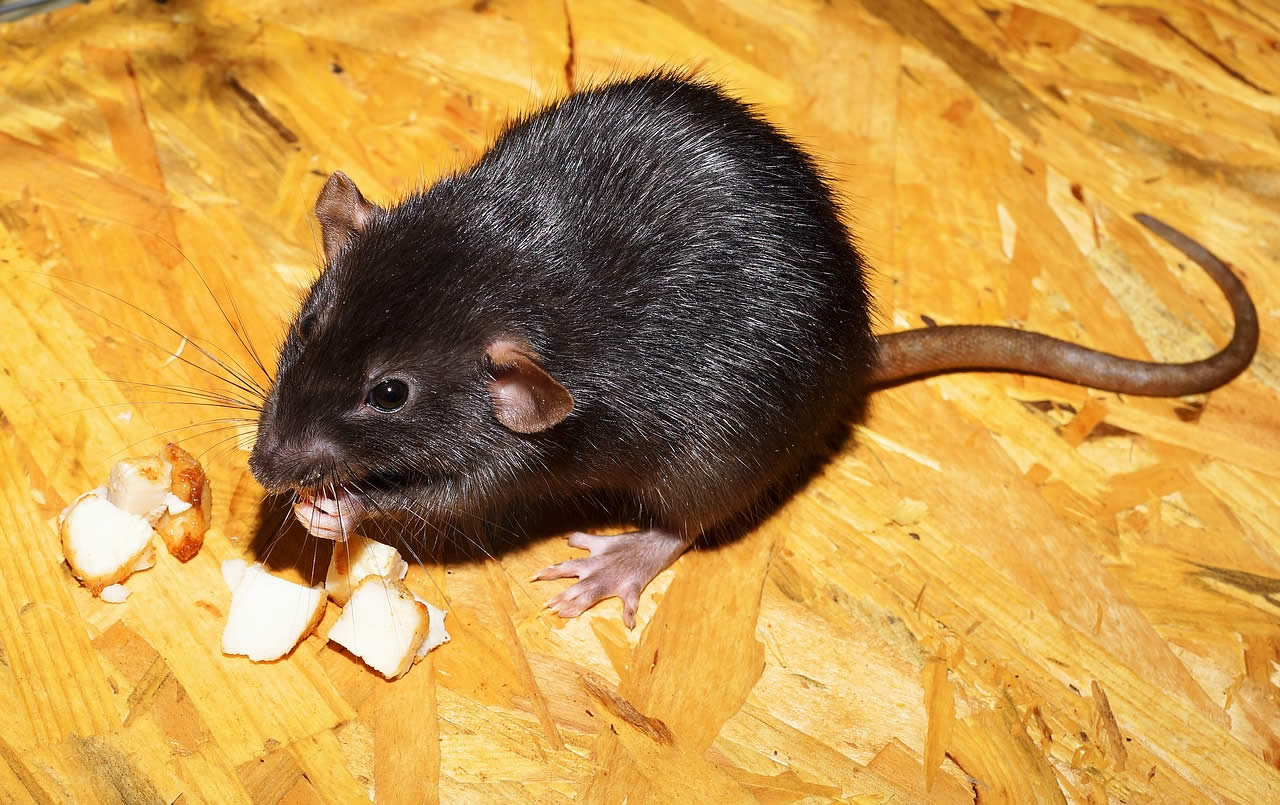Did you know there could be up to 120 million rats in the UK right now? That’s nearly two rats for every person in the country.
What’s more, these unwanted guests aren’t just passing visitors. When rats under floorboards make themselves at home, they can squeeze through gaps as small as 15mm and dig up to 18 inches underground to access your house. However, the real concern isn’t just their presence – it’s their remarkable reproduction rate. A single female rat can produce up to 200 babies in a year, with each litter containing 6-8 offspring every six weeks.
The consequences can be severe. From gnawing on electrical cables that could cause fires to leaving droppings that spread diseases like Leptospirosis and Salmonella, these rodents pose serious risks to both your property and health. If you’re hearing scratching under floorboards at night or noticing other signs of rats, it’s crucial to act quickly.
In this guide, we’ll show you exactly how to identify, tackle, and prevent rat infestations under your floorboards, ensuring your home stays safe and rat-free.
Table of Contents
ToggleSigns of Rats Under Your Floorboards
Spotting signs of rats under floorboards early allows for quick action against these unwanted guests. From distinctive noises to visible evidence, here’s how to identify a rat infestation beneath your feet.
Scratching noises at night
Since rats are nocturnal creatures, the most common indicator of their presence is the sound they make after dark. These rodents create soft scratching and rustling noises as they move around under floorboards. Additionally, you might hear gnawing sounds as rats work to keep their continuously growing teeth sharp.
The scratching typically becomes more noticeable in specific areas, particularly along walls connecting to neighbouring properties. While banging on the floor might seem like a solution to silence them, rats often continue their activities undeterred.
Rat droppings and urine marks
Rat droppings serve as a clear indicator of infestation. These dark, cylindrical pellets measure between 1-2 cm in length, resembling large grains of rice. A single rat can produce between 20 to 50 droppings within 24 hours. Fresh droppings appear dark and shiny with a soft texture, whilst older ones become hard and crumbly.
Along with droppings, rats leave distinctive urine trails that:
- Produce a strong ammonia-like smell
- May fluoresce under UV light
- Often appear alongside dark grease marks from their bodies
Gnaw marks on wood
Rats must constantly gnaw to maintain their ever-growing incisors. Their teeth marks, measuring approximately 1/8-inch long, can be found on:
- Wooden beams and floorboards
- Electrical cables and wiring
- Water pipes and utility lines
These gnaw marks pose serious risks beyond property damage. Chewed electrical wiring can lead to fire hazards, whilst damaged pipes might cause flooding. Furthermore, rats often take advantage of existing gaps around pipework to access living spaces.
The presence of dark smears along walls and corners provides additional evidence of rat activity. Due to their poor eyesight, rats tend to run alongside walls, leaving greasy marks from their bodies. These rub marks, combined with other signs, help identify frequently used rat pathways through your property.
Regular inspection for these signs, particularly in less-used areas of buildings where foot and tail marks might be visible in dust, can help catch an infestation before it grows. Since rats can burrow up to five metres beneath the ground, though typically only half a metre, they can easily access the space beneath floorboards through various entry points.
Understanding How Rats Enter
Rats possess remarkable abilities to infiltrate homes through the tiniest openings. These clever rodents can squeeze through holes as small as 15mm, making it challenging to spot potential entry points.
Common entry points
Several vulnerable areas around your property serve as gateways for rats to access the space beneath floorboards:
- Poorly Fitted Pipes and Utility Lines: Gaps around exterior pipes and utility openings create easy access routes. Rats often exploit spaces where builders have left openings around service lines.
- Air Vents: Both modern and older properties face risks through air vents. Whilst original clay airbricks erode over time, modern plastic vents prove equally vulnerable as rats can gnaw through them.
- Foundation Issues: Natural cracks in foundations, especially in older buildings, provide direct access. Once inside, rats can establish nests within wall cavities and under floorboards.
- Drainage Systems: Rats frequently enter properties through damaged drains or broken sewer pipes. Their ability to navigate sewage systems makes underground access points particularly concerning.
- External Doors and Windows: Even small gaps around doors and windows can serve as entry points. Weather stripping deterioration or poor installation creates opportunities for rats to slip inside.
Beyond these common points, rats demonstrate remarkable persistence in creating their own entrances. Armed with powerful teeth, they can chew through various materials including:
- Wood and plastic
- Concrete
- Brick
- Even steel
Why rats choose floorboards
The space beneath floorboards presents an ideal habitat for rats for several compelling reasons:
Perfect Environment: The dark, damp void beneath floorboards creates optimal conditions for rats. Areas where water pools beneath houses prove particularly attractive.
Protection and Privacy: As nocturnal creatures, rats seek dark spaces with minimal human contact. The area under floorboards offers both shelter and protection from predators.
Easy Access to Resources: Once established beneath floorboards, rats can:
- Access food sources through kitchen areas
- Find water from condensation or leaking pipes
- Create nesting sites in undisturbed spaces
Colonisation Potential: The protected environment allows rats to establish colonies rapidly. A single breach can lead to a significant infestation, as rats can create additional entry points by gnawing through floorboards from below.
Seasonal Factors: During colder months, the relative warmth beneath floorboards, combined with proximity to human living spaces, makes these areas particularly appealing.
Understanding these entry methods and preferences proves essential for effective control. Rats demonstrate consistent patterns in choosing entry points, often exploiting structural weaknesses or creating new access routes through their persistent gnawing behaviour. Moreover, their presence under floorboards frequently indicates broader issues with property maintenance or drainage systems that require attention.
Quick Emergency Solutions
Once you’ve identified a rat problem beneath your floorboards, swift action becomes crucial. Here are proven methods to tackle the infestation effectively.
Setting effective traps
Spring-loaded traps remain one of the most reliable solutions for catching rats under floorboards. For optimal results:
- Position traps along walls where rats frequently travel
- Screw traps firmly to a board to prevent flipping
- Bait with peanut butter, which proves irresistible to rats
To increase trap effectiveness, leave them unset but baited for 3-4 days. Subsequently, set the traps with fresh bait – this method often results in multiple catches daily. The main advantage of traps lies in retrieving dead rats promptly, preventing unpleasant odours.
Using rat repellents
Botanical repellents offer a safer alternative to harsh chemicals. These deterrents work through scent-based formulations that rats find offensive. The most effective options include:
Plant-based solutions:
- Balsam fir oil compounds
- Peppermint oil preparations
- Herbal extract combinations
Although peppermint oil requires replacement every 1-2 weeks, professional-grade botanical repellents can last 2-4 weeks between applications. For maximum effectiveness, apply repellents heavily around:
- Entry points
- Under decking
- Around waste bins
- Foundation perimeters
When to use poison
Despite its effectiveness, rat poison requires careful consideration. Professional pest controllers often use slow-acting baits that rats never associate with their declining health. Nevertheless, several crucial factors warrant attention:
Key considerations:
- Poison might cause rats to die in inaccessible areas
- Dead rats can create significant odour issues
- Risk to children and pets requires professional handling
- Special products exist to mask decomposition smells
For severe infestations, combining methods often yields better results. Professional pest control services employ trained dogs for immediate rat removal, alongside strategic placement of traps and repellents. This multi-faceted approach ensures higher success rates in eliminating rats from under floorboards.
Ultrasonic devices present another option, although their effectiveness varies considerably. These devices emit high-frequency sound waves meant to deter rats, yet require multiple units as sounds cannot penetrate walls or furniture. Therefore, they work best as part of a broader control strategy rather than a standalone solution.
Remember that successful rat control often requires persistence. Even after initial success, maintaining vigilance through regular inspections and preventive measures ensures long-term results. Professional pest control services can provide targeted solutions, particularly for extensive infestations where DIY methods prove insufficient.
Professional Rat Control Options
Professional pest control services offer reliable solutions for persistent rat problems beneath floorboards. These experts bring specialised knowledge and access to professional-grade treatments unavailable to the general public.
Types of professional treatments
Professional rat controllers employ multiple methods simultaneously for maximum effectiveness. Their comprehensive approach includes:
Advanced Monitoring Systems: PestConnect technology provides 24/7 surveillance of rat activity, sending real-time alerts when rodents are detected. This system enables swift responses to new infestations whilst tracking the effectiveness of ongoing treatments.
Professional-Grade Solutions: Certified pest controllers have exclusive access to stronger rodenticides not available over the counter. These treatments prove more effective because:
- They contain maximum-strength active ingredients
- Use high-quality food-grade materials
- Ensure better bait uptake by rats
Tailored Treatment Plans: Professional exterminators first conduct thorough site inspections to identify:
- Primary entry points
- Breeding locations
- Extent of infestation
- Potential risks to property
Based on these assessments, they create customised solutions that address both immediate concerns and long-term prevention.
Innovative Control Methods: Many professional services now use trained Jack Russell dogs for rapid rat detection and elimination. These specially trained dogs can quickly locate and despatch rats hiding in difficult-to-reach areas beneath floorboards.
Cost considerations
Professional rat control typically involves a structured payment system based on the severity of infestation and required treatments.
Standard Treatment Costs
- Basic rat removal services range from £120 to £240
- Average treatment cost sits at £180
- Day rates for pest control specialists average £230
Factors Affecting Pricing: Several elements influence the final cost:
Property Size and Access:
-
- Larger properties require more extensive treatment
- Hard-to-reach areas might incur additional charges up to £245
Infestation Severity
- Minor problems typically need two visits
- Severe infestations may require multiple treatments
- Complex cases involving structural damage demand comprehensive solutions
Treatment Type
- Basic bait station deployment
- Comprehensive solutions, including proofing
- Emergency response services
Long-term Value
Initially, professional services might seem costly compared to DIY methods. Nevertheless, they often prove more economical because:
- They address root causes rather than symptoms
- Prevent future infestations through proper sealing
- Save money on repeated DIY attempts
- Protect property from further damage
Additional Services
Most professional treatments include:
- Initial consultation
- Treatment implementation
- Follow-up visits
- Preventative measures
- Expert advice on future prevention
Some companies offer guarantees and ongoing maintenance programmes to ensure long-lasting results. These services typically combine regular inspections with preventative treatments, helping maintain a rat-free environment beneath your floorboards.
Preventing Future Infestations
Keeping rats away from your property requires a systematic approach focused on eliminating access points and making your home less appealing to these persistent pests.
Sealing entry points
A thorough inspection of your property reveals potential rat entry points that need immediate attention. Rats can squeeze through openings as small as 20mm, hence sealing even minor gaps proves crucial. Focus on these vulnerable areas:
External Protection:
- Fill gaps around utility lines and pipes with steel wool or stainless steel fill fabric
- Cover vents with rust-resistant screens and metal grills
- Install door sweeps and kick plates to prevent under-door access
- Apply weatherstripping around doors and windows
Ground-Level Defence
Use Flexi Armour’s comprehensive rodent-proofing solutions, specifically designed for:
- Dock levellers
- Expansion joints
- Weep vents
Regular inspections
Maintaining vigilance through systematic checks helps identify potential issues early. Schedule monthly inspections of:
Interior Checks:
- Examine internal walls for cracks
- Look for gaps behind kitchen cabinets
- Check utility openings within the property
Exterior Assessment:
Conduct thorough examinations after severe weather events, paying attention to:
- Roof tiles and insulation damage
- Foundation cracks
- Changes in landscape that might affect entry points
Proper food storage
Proper food management significantly reduces the likelihood of rat infestations. Implement these storage practises:
Kitchen Organisation
Store all foodstuffs in:
- Metal or glass containers with tight-fitting lids
- Airtight containers placed above ground level
- Robust containers designed explicitly for pest prevention
Waste Management
Place outdoor rubbish in metal bins with securely fitted lids. Additionally:
- Empty bins regularly
- Clean containers with soap and water
- Dispose of trash frequently
Garden Maintenance
Keep your garden tidy by:
- Removing debris promptly
- Managing compost heaps properly
- Avoiding organic food waste in composting
Pet Food Considerations
Store pet food carefully by:
- Using sealed containers
- Removing food bowls overnight
- Cleaning up spilled food immediately
The Flexi Armour range offers innovative solutions using breathable stainless steel knitted mesh for internal applications and corrosion-resistant ground covering mesh for external use. This sustainable approach minimises the need for rodenticides whilst supporting UK legislation around food safety and health regulations.
Remember, maintaining cleanliness inside and around your property remains fundamental. Tidy spaces offer fewer hiding spots for rats. Regular cleaning and maintenance effectively limit food sources and eliminate potential nesting habitats. By consistently applying these preventive measures, alongside routine professional inspections, you can significantly reduce the risk of future rat infestations beneath your floorboards.
Our Final Say!
Dealing with rats under floorboards requires swift action and a comprehensive approach. These unwanted visitors pose serious risks through property damage and disease transmission, making early detection crucial for adequate control.
Professional pest control services offer the most reliable solution, though emergency measures like traps and repellents can help manage immediate concerns. The combination of monitoring systems, specialised treatments, and expert knowledge ensures the thorough elimination of rat populations beneath your floors.
Long-term success depends on consistent prevention strategies. Regular property inspections, proper food storage, and effective sealing of entry points significantly reduce future infestation risks. Most importantly, maintaining these preventive measures helps protect both your property and your family’s health.
Remember, rats reproduce rapidly and adapt quickly to their environment. Taking decisive action now, whether through DIY methods or professional services, prevents minor issues from becoming significant infestations. Stay vigilant with regular checks and maintenance – your home’s safety depends on it.
Are you looking for pest control in Cheshire? Get in touch with us and a local pest removal company will be in touch.

